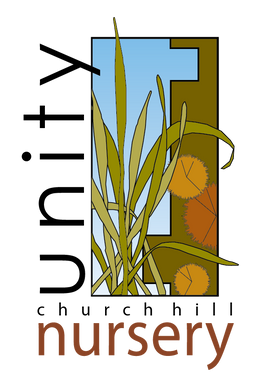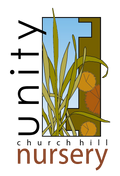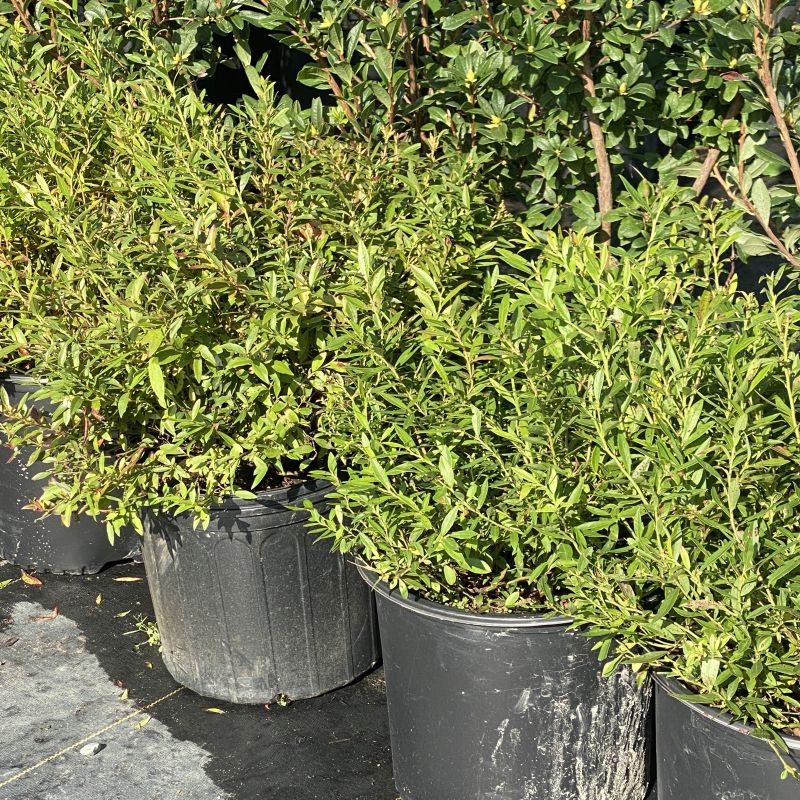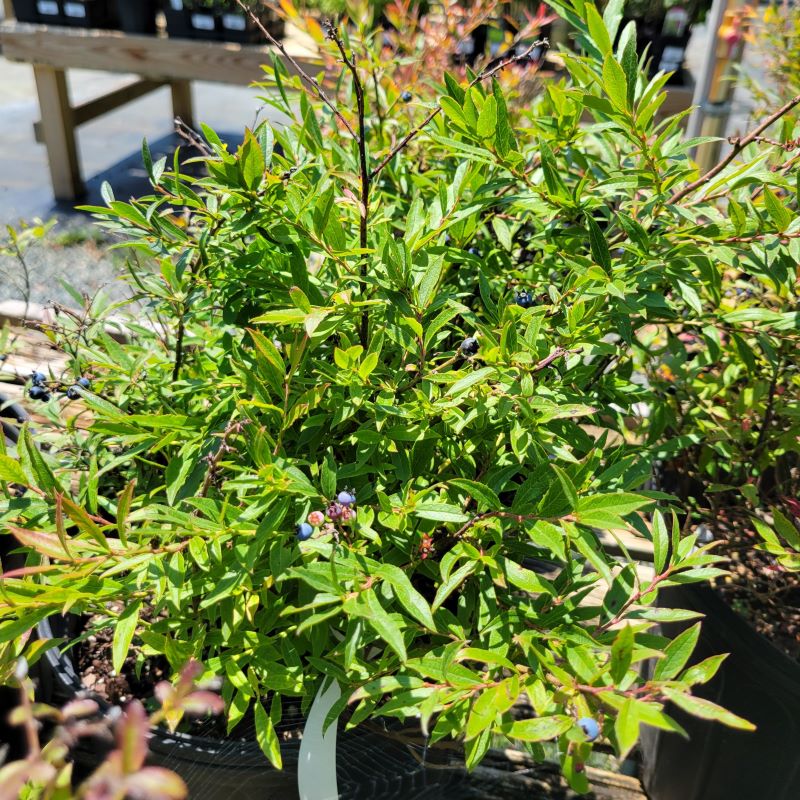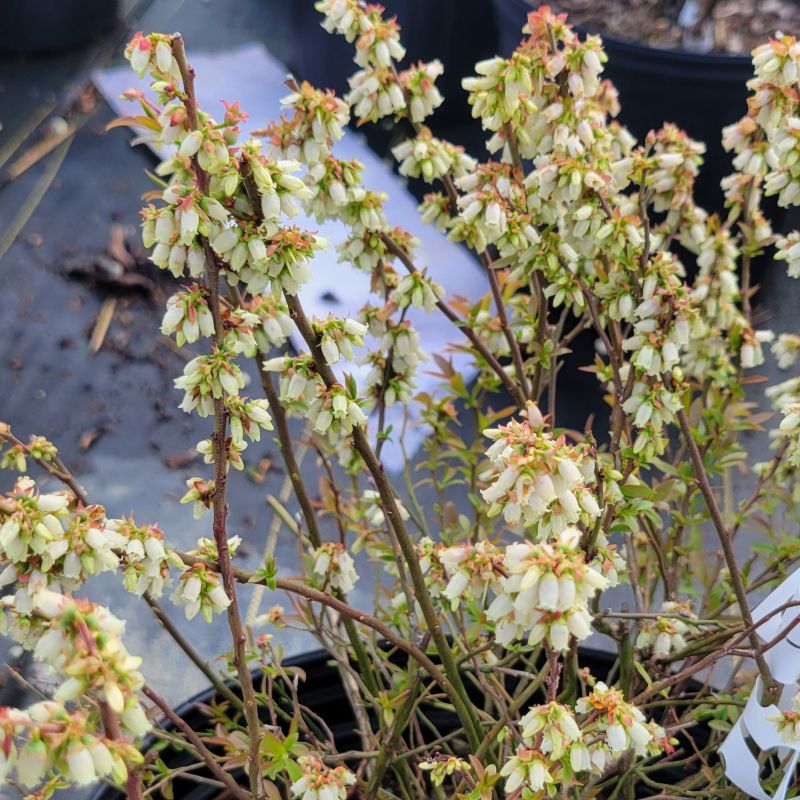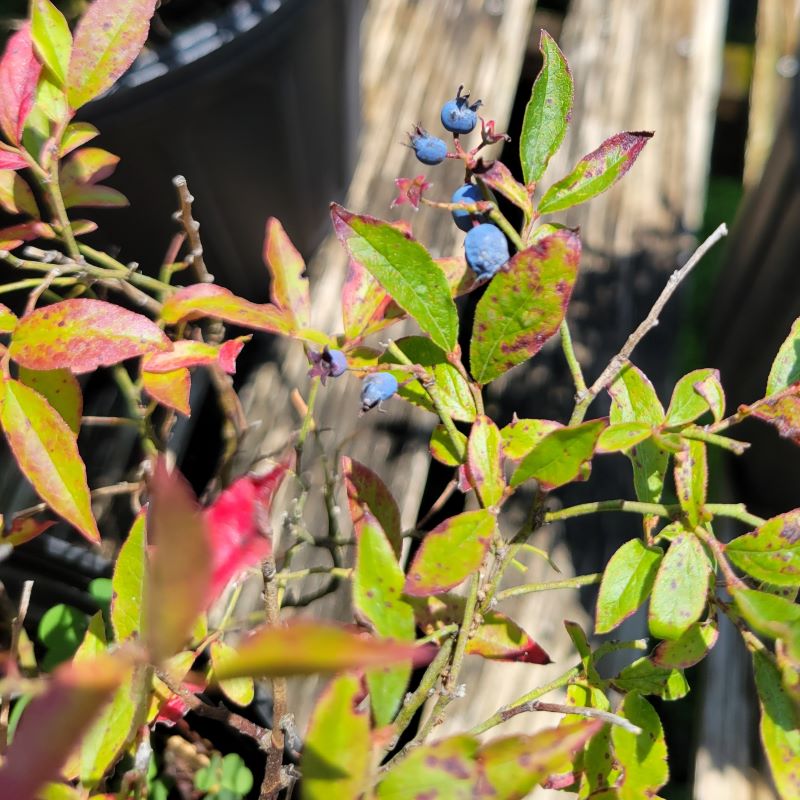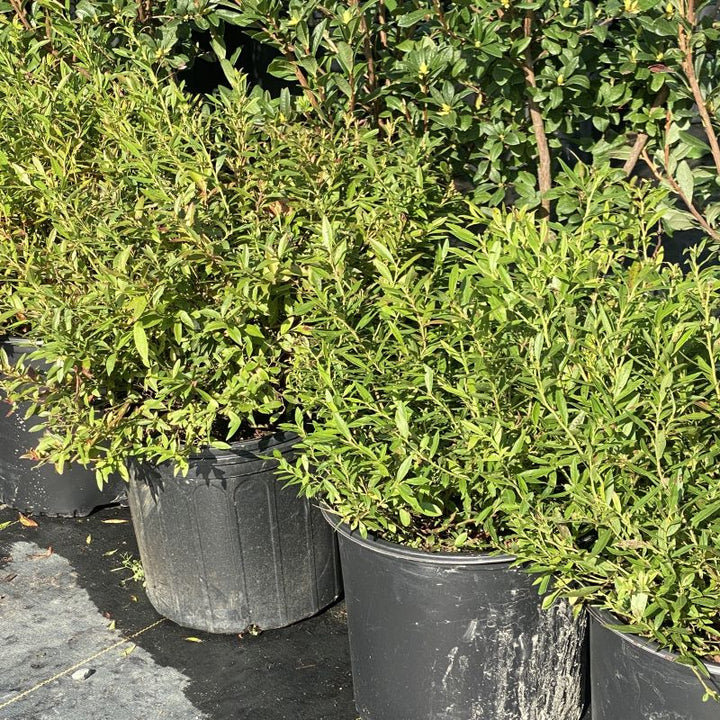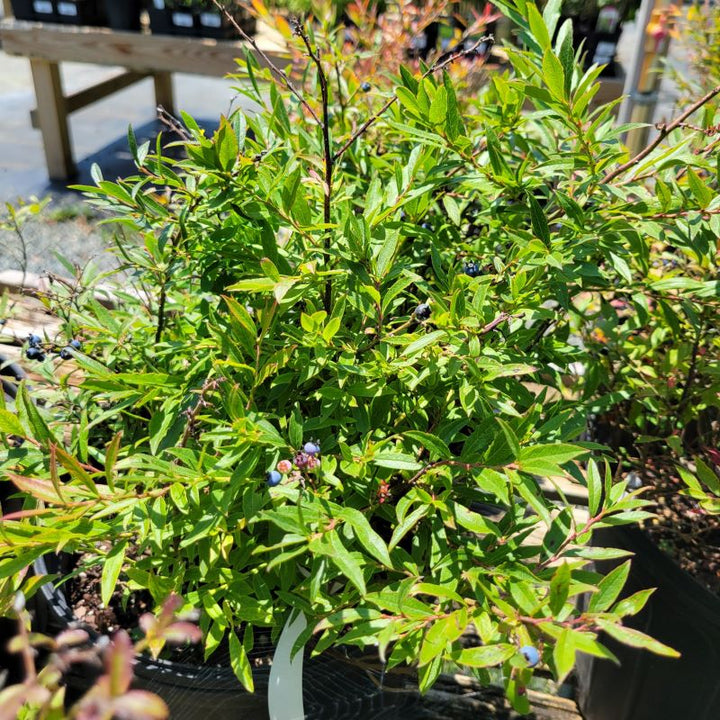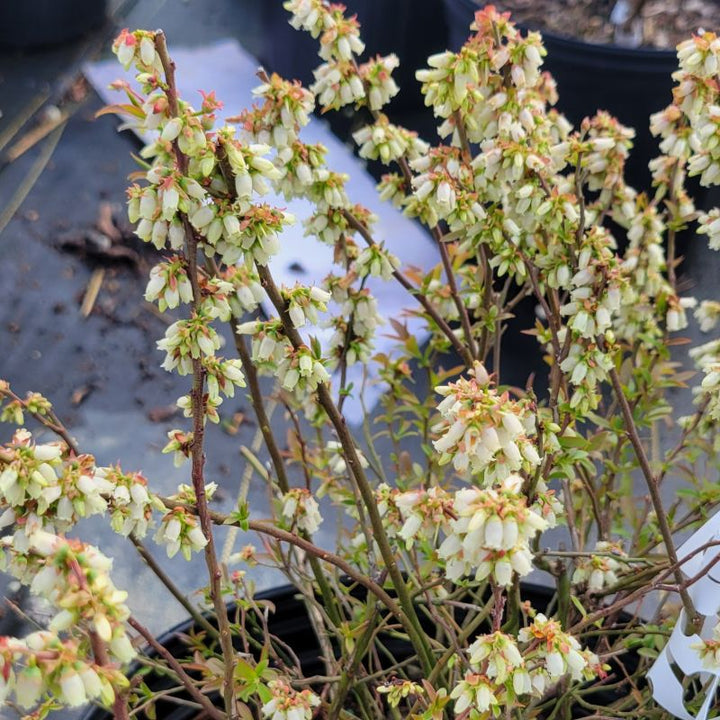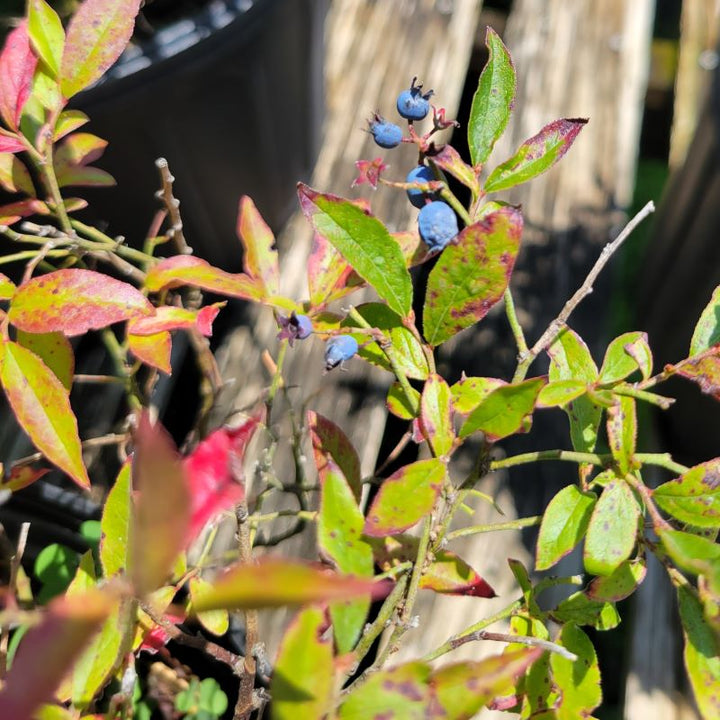Vaccinium angustifolium (Lowbush Blueberry)
- Low stock - 8 items left
- Inventory on the way
Vaccinium angustifolium, commonly called lowbush blueberry, is a low-groing, scrubby native shrub found in acidic, open woodlands, mountain balds, or sandy fields. Native to much of northeastern North America, lowbush blueberry is the less common cousin to the more commonly produced (and found in grocery stores) highbush blueberry. As their names imply, lowbush blueberry is much lower growing, reaching a mature height of only 6-24" with a similar spread, and these plants produce smaller, sweeter berries, which are highly sought after by birds and wildlife; since berries are smaller and less worthy of snacking, they are common among gardeners and foragers for their use in jams and jellies.
Lowbush blueberry is deciduous to semi-evergreen, and prefers (much like all Vaccinium) acidic, medium-moist, well-drained sandy soils. Since plants can be found in bright, open fields as well as in conifer forests, Vaccinium angustifolium tolerates a wide variety of light levels, and is generally a very hard plant ideal for a number of home garden locations with acidic soil. While lowbush blueberry may not be as large or as productive as its highbush relative, it still shows a great deal of ecological and culinary appeal, and attracts a wide variety of pollinators, butterfly hosts, and birds to wherever it may grow.
